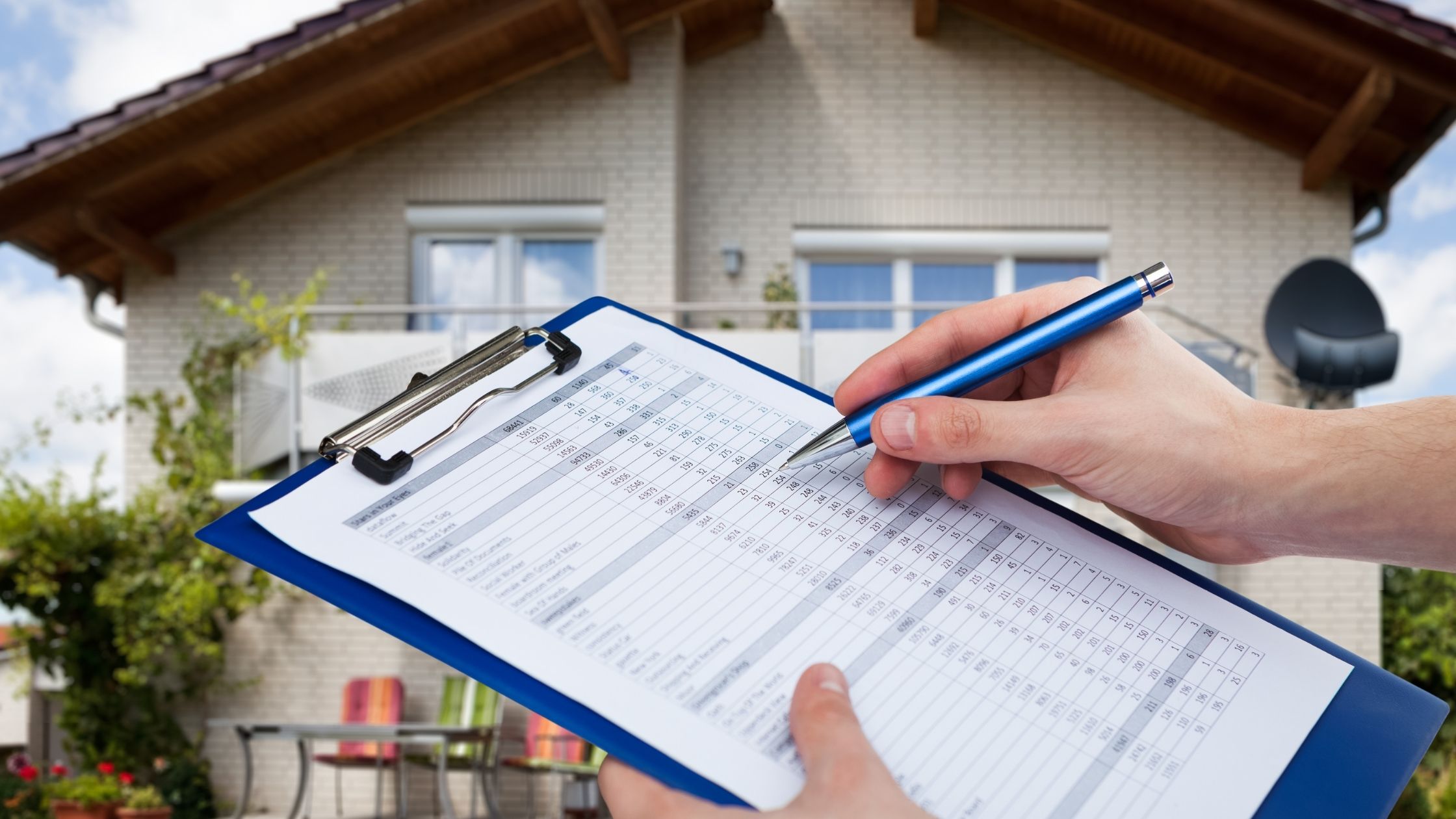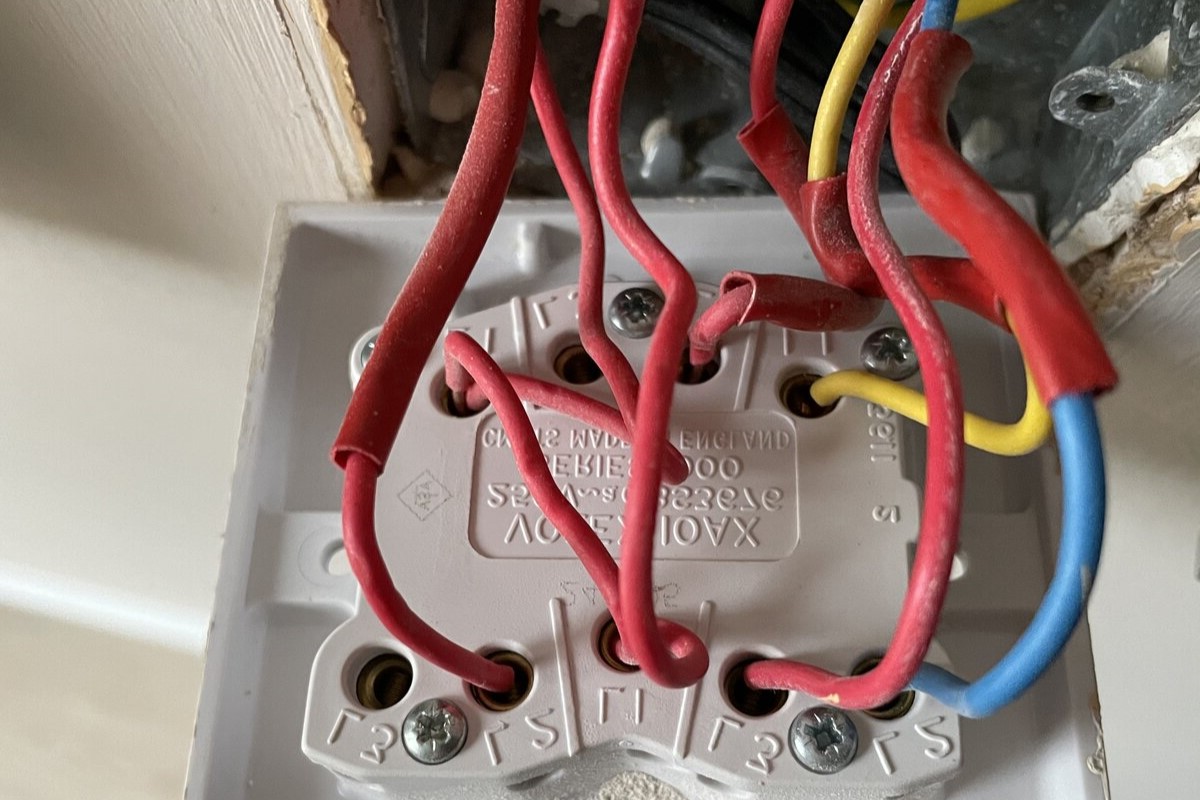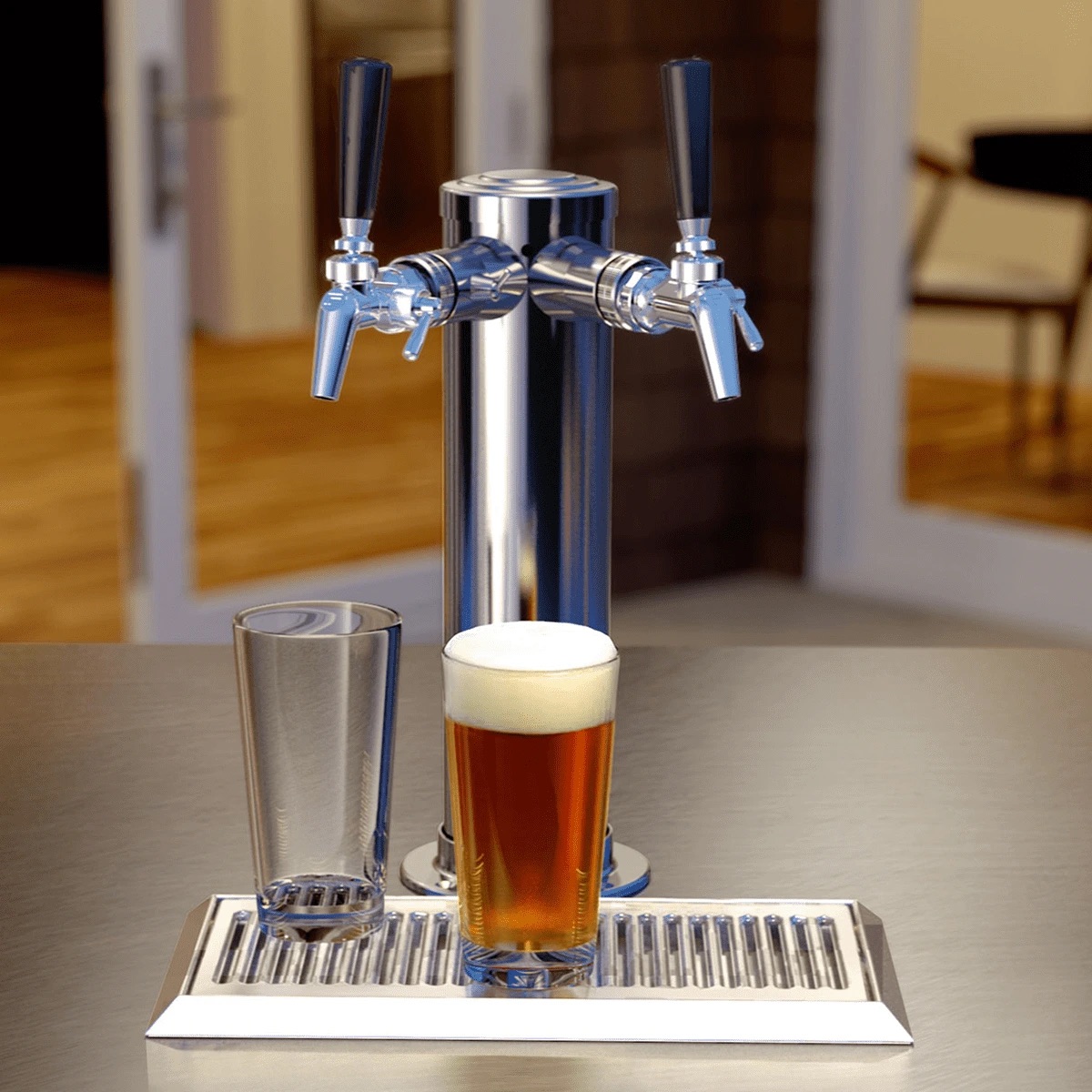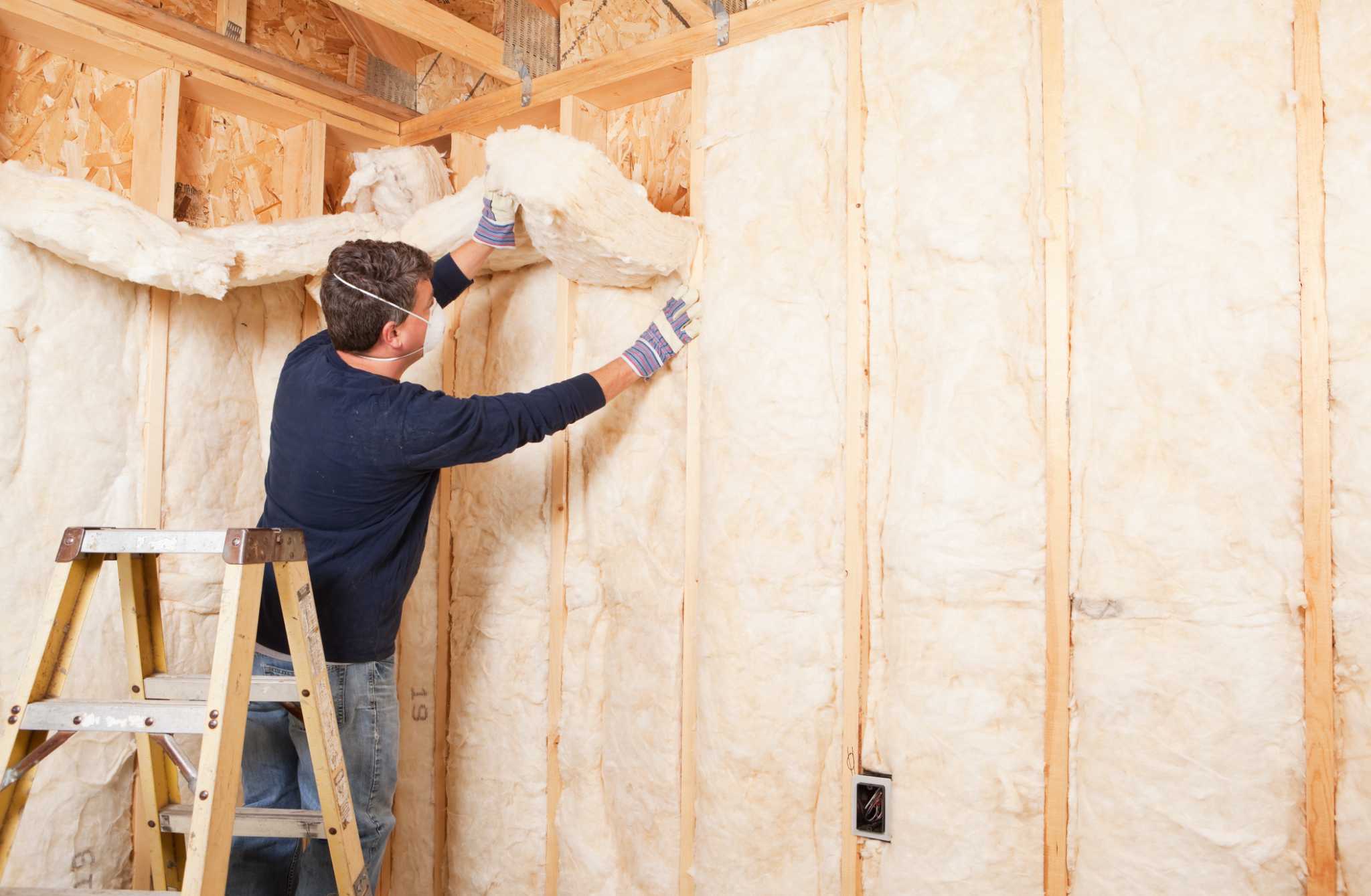Home>Home Maintenance>What Is 4 Point Home Inspection


Home Maintenance
What Is 4 Point Home Inspection
Modified: August 28, 2024
Learn about the importance of 4 point home inspections for home maintenance. Discover what they entail and how they can benefit your property.
(Many of the links in this article redirect to a specific reviewed product. Your purchase of these products through affiliate links helps to generate commission for Storables.com, at no extra cost. Learn more)
Introduction
Welcome to the world of home maintenance! As a homeowner, it’s essential to stay on top of regular inspections to ensure that your property is safe and well-maintained. One crucial type of inspection that you may come across is the 4 Point Home Inspection. In this article, we will delve into the definition, purpose, components, benefits, and when to consider a 4 Point Home Inspection.
Buying a house is a significant investment, and it’s essential to know the condition of its electrical, plumbing, HVAC systems, and roof. A 4 Point Home Inspection focuses specifically on these four areas of your home to determine their overall condition. It provides a comprehensive overview of the critical components and identifies any potential issues that may require attention.
So why is a 4 Point Home Inspection important? Well, the health and functionality of these four systems can have a significant impact on the safety, comfort, and value of your home. By uncovering any problems, you can take proactive measures to address them before they escalate into more significant and costly issues.
Now that we know the importance of a 4 Point Home Inspection, let’s explore the specific components that are assessed during this inspection:
Key Takeaways:
- A 4 Point Home Inspection assesses the electrical, plumbing, HVAC, and roof systems to identify potential risks, prevent costly repairs, and maintain insurance coverage for a safe and well-maintained property.
- Consider a 4 Point Home Inspection when buying an older home, renewing insurance, planning renovations, or for peace of mind. It helps homeowners stay proactive in maintaining a safe and functional property.
Definition of a 4 Point Home Inspection
A 4 Point Home Inspection is a detailed assessment of four primary areas of a property: the electrical system, plumbing system, HVAC (Heating, Ventilation, and Air Conditioning) system, and the condition of the roof. This type of inspection is often required by insurance companies when issuing policies for older homes or homes with outdated systems.
Unlike a standard home inspection, which provides a comprehensive evaluation of the entire property, a 4 Point Inspection focuses specifically on these four critical components. The purpose is to determine the condition, functionality, and overall safety of these systems and identify any potential concerns that may pose risks or require repair or replacement.
The 4 Point Home Inspection requires a certified inspector to thoroughly examine each of the four areas, assessing their age, operation, and general condition. The findings are documented in a report, which includes details of any deficiencies or problems that need attention.
This type of inspection is commonly done for insurance purposes, as insurers want to ensure that a home’s essential systems are in good working order to mitigate potential risks and liabilities. It provides insurers with an accurate assessment of the property’s condition and helps them assess the level of coverage and potential risks associated with insuring the home.
It’s important to note that a 4 Point Home Inspection is typically required for homes over a certain age, often 30 years or older, or for homes that have not had recent updates or renovations to these four key areas. Insurance companies want to minimize their exposure to potential claims stemming from faulty systems or aging infrastructure, and a 4 Point Inspection helps provide them with the necessary information to make informed decisions.
Now that we have a clear understanding of what a 4 Point Home Inspection entails, let’s explore its purpose in more detail.
Purpose of a 4 Point Home Inspection
The purpose of a 4 Point Home Inspection is to assess the condition, functionality, and safety of four critical components in a property: the electrical system, plumbing system, HVAC system, and roof. This inspection serves several important purposes:
1. Insurance Requirement: Many insurance companies require a 4 Point Home Inspection as a condition for issuing or renewing homeowners insurance policies, especially for older homes or homes with outdated systems. By conducting this inspection, insurers can evaluate the level of risk associated with a property and determine appropriate coverage and premiums. It helps them assess the potential liability and the likelihood of claims arising from faulty systems or aging infrastructure.
2. Risk Mitigation: A 4 Point Home Inspection helps homeowners identify potential risks before they escalate into major problems. By assessing the electrical, plumbing, HVAC, and roof systems, inspectors can uncover any underlying issues that may pose safety hazards or lead to costly repairs down the line. Addressing these concerns proactively helps mitigate risks and ensures the safety and well-being of the occupants.
3. System Evaluation: The inspection provides a comprehensive evaluation of the four critical systems in a home. It assesses their age, functionality, and general condition, allowing homeowners to understand the current state of these systems. This knowledge is valuable in determining if any repairs, replacements, or upgrades are necessary to improve the efficiency and longevity of these systems.
4. Peace of Mind: A 4 Point Home Inspection offers peace of mind to homeowners, knowing that their property’s vital systems have been thoroughly examined by a professional. By having a clear understanding of any existing problems or potential issues, homeowners can take the necessary steps to address them promptly. This proactive approach not only ensures the safety of the home and its occupants but also helps maintain the value and integrity of the property.
Overall, the purpose of a 4 Point Home Inspection is to provide homeowners, insurance companies, and prospective buyers with a detailed assessment of the electrical, plumbing, HVAC, and roof systems. It helps identify any deficiencies, potential risks, or outdated components that may require attention. By addressing these issues, homeowners can enjoy a safe and well-maintained property, while insurance companies can accurately assess the level of coverage and risk associated with insuring the home.
Now that we understand the purpose of a 4 Point Home Inspection, let’s explore the components of this inspection in more detail.
Components of a 4 Point Home Inspection
A 4 Point Home Inspection focuses on four key components of a property: the electrical system, plumbing system, HVAC system, and roof. Let’s take a closer look at each of these components and what they entail:
1. Electrical System Assessment
The electrical system assessment involves a thorough evaluation of the main electrical panel, wiring, outlets, switches, and fixtures in the home. The inspector will check for any outdated or faulty wiring, potential fire hazards, improper grounding, or other electrical issues. They will also assess the condition of the electrical panel and ensure it can handle the home’s electrical demands safely.
2. Plumbing System Assessment
During the plumbing system assessment, the inspector will examine the main water supply line, plumbing fixtures, drains, and water heaters. They will check for any leaks, signs of water damage, rusty pipes, or inadequate water pressure. Inspectors will also inspect the sewer lines to identify any clogs or blockages that could lead to drainage problems or backups.
3. HVAC System Assessment
The HVAC system assessment focuses on the heating, ventilation, and air conditioning systems in the home. Inspectors will check the furnace, air conditioning unit, ductwork, and thermostat. They will assess the overall condition of these components, ensure proper functionality, and identify any potential problems, such as inadequate heating or cooling, malfunctioning thermostats, or leaky ducts.
4. Roof Condition Evaluation
The roof condition evaluation involves a thorough inspection of the roof’s structure, materials, and overall condition. Inspectors will check for any signs of damage, such as missing or damaged shingles, leaks, or sagging areas. They will also assess the integrity of the roof’s flashing, gutters, and downspouts. This evaluation helps identify any potential leaks or structural issues that could lead to water damage or compromised roofing materials.
During each component assessment, the inspector will document their findings, noting any deficiencies, repairs needed, or potential risks. The report will provide homeowners with a comprehensive overview of the current state of their electrical, plumbing, HVAC systems, and roof. This information is essential for making informed decisions regarding necessary repairs, upgrades, or maintenance.
Now that we have explored the components of a 4 Point Home Inspection, let’s move on to discuss the benefits of this type of inspection.
Electrical System Assessment
The electrical system assessment is an integral part of a 4 Point Home Inspection, focusing on evaluating the safety, functionality, and condition of the electrical system in a property. This assessment is crucial as electrical issues can lead to safety hazards, fire risks, and costly repairs if not addressed promptly. Let’s delve into the key aspects of an electrical system assessment:
Read more: What Is Tuck Pointing Brick
1. Main Electrical Panel
The inspector will thoroughly examine the main electrical panel, also known as the circuit breaker box. They will check for any signs of wear and tear, loose connections, outdated or inadequate wiring, or signs of overheating. The main electrical panel should be properly labeled with circuit breakers or fuses for each circuit, allowing easy identification and control over the electrical supply to various areas of the house.
2. Wiring
The inspector will assess the wiring throughout the property, including both visible and accessible wiring. They will check for any frayed, damaged, or exposed electrical wires that could pose safety risks, as well as outdated wiring materials such as knob-and-tube wiring or aluminum wiring. The overall condition and functionality of the wiring will be evaluated to ensure it meets current safety standards.
3. Outlets and Switches
All electrical outlets, switches, and fixtures will be inspected for proper installation, functionality, and safety. The inspector will check for any loose outlets or switches, improper wiring, or any signs of electrical arcing or sparking. Ground fault circuit interrupters (GFCIs) will also be tested in areas where they are required, such as kitchen and bathroom outlets, to ensure protection against electrical shocks.
4. Fixtures and Appliances
The inspector will assess the condition and functionality of the electrical fixtures and appliances in the home. This includes lighting fixtures, ceiling fans, major appliances, and any other electrical devices. They will ensure that they are properly installed, grounded, and in good working order.
Read more: How Much Does PS4 Repair Cost
5. Safety Measures
Throughout the electrical system assessment, the inspector will pay close attention to safety measures, such as the presence of smoke detectors and carbon monoxide detectors. They will verify the proper placement and functionality of these devices to ensure the safety of the occupants.
The electrical system assessment is vital to uncover any safety hazards, outdated wiring, or malfunctioning components that may pose a risk to the property and its occupants. By identifying any issues or potential problems, homeowners can take the necessary steps to address them promptly, ensuring a safe and well-functioning electrical system.
Now that we’ve explored the electrical system assessment, let’s move on to the next component of a 4 Point Home Inspection, the plumbing system assessment.
Plumbing System Assessment
The plumbing system assessment is a crucial component of a 4 Point Home Inspection, focusing on evaluating the functionality, condition, and safety of the plumbing system in a property. Plumbing issues can lead to water damage, mold growth, and costly repairs if not detected and addressed in a timely manner. Let’s delve into the key aspects of a plumbing system assessment:
1. Main Water Supply Line
The inspector will assess the main water supply line entering the property. They will check for any signs of leaks, corrosion, or damage to the pipes. The water pressure will also be tested to determine if it is within an acceptable range, as low or high water pressure can lead to issues with water flow and plumbing fixtures.
2. Plumbing Fixtures
The inspector will evaluate the functionality and condition of plumbing fixtures throughout the property, including sinks, toilets, showers, bathtubs, and faucets. They will check for any signs of leaks, inadequate drainage, or water flow issues. The proper functioning of shut-off valves will also be tested to ensure they can effectively stop the water supply in case of emergencies or repairs.
Read more: What Is The Point Of Napkin Rings?
3. Drainage System
All drains and pipes in the property will be inspected to identify any signs of clogs, leaks, or improper installation. The inspector will check the condition of drain pipes, including those connected to sinks, showers, bathtubs, and toilets. They will also assess the functionality of drain traps to ensure they are preventing sewer gases from entering the property.
4. Water Heaters
If present in the property, water heaters will be examined to assess their condition, functionality, and safety. The inspector will check for any signs of corrosion, leaks, or inadequate heating performance. They will also verify the proper installation and functionality of the pressure relief valve, which is crucial for preventing excessive pressure buildup in the water heater.
5. Sewer Lines
The inspector will assess the condition and functionality of the sewer lines connecting the property to the municipal sewer system. They may use specialized equipment, such as video cameras, to inspect the sewer lines for any signs of blockages, tree root intrusion, or potential damage. These inspections are essential to identify any potential issues that could lead to sewer backups or drainage problems.
The plumbing system assessment helps identify any existing plumbing issues, potential risks, or necessary repairs or upgrades. By addressing these concerns, homeowners can ensure the proper functioning of their plumbing system, prevent water damage, and maintain a safe and efficient property.
Now that we’ve explored the plumbing system assessment, let’s move on to the next component of a 4 Point Home Inspection, the HVAC system assessment.
HVAC System Assessment
The HVAC (Heating, Ventilation, and Air Conditioning) system assessment is a crucial component of a 4 Point Home Inspection, focusing on evaluating the functionality, efficiency, and safety of the HVAC system in a property. The HVAC system plays a vital role in providing comfort and maintaining indoor air quality. Let’s delve into the key aspects of an HVAC system assessment:
1. Heating System
The inspector will assess the heating system, which may include a furnace, heat pump, or boiler. They will evaluate the condition, age, and efficiency of the heating unit, ensuring that it is properly functioning and safe. The airflow, electrical connections, and heat distribution will also be examined to ensure optimal performance and energy efficiency.
2. Cooling System
The cooling system, typically an air conditioning unit or heat pump, will be evaluated for proper functioning and safety. The inspector will examine its overall condition, age, and efficiency. They will check the refrigerant levels, condenser and evaporator coils, and the airflow to ensure adequate cooling capacity and proper operation.
3. Ductwork
The inspector will inspect the HVAC system’s ductwork to ensure proper insulation, sealing, and distribution of conditioned air. Leaky or poorly insulated ducts can lead to energy waste and reduced system efficiency. The inspector will also check for any obstructions or blockages in the ductwork that may hinder airflow and impact system performance.
4. Thermostat
The thermostat is a crucial component of the HVAC system, as it controls the temperature and allows for proper climate control. The inspector will assess the functionality and accuracy of the thermostat, ensuring that it is properly calibrated and responsive.
Read more: What Is The Melting Point Of Glass
5. Ventilation and Air Quality
The inspector will assess the ventilation system and indoor air quality components, such as air filters and air purifiers. They will check for proper ventilation throughout the property and ensure that air filters are clean and in good condition. The inspector will also evaluate the presence of any potential indoor air quality issues, such as mold or excessive humidity.
The HVAC system assessment helps homeowners identify any existing problems, potential risks, or necessary maintenance for their heating, cooling, and ventilation systems. By addressing these concerns, homeowners can ensure optimal comfort, energy efficiency, and indoor air quality in their homes.
Now that we’ve explored the HVAC system assessment, let’s move on to the final component of a 4 Point Home Inspection, the evaluation of the roof condition.
Roof Condition Evaluation
The roof condition evaluation is a crucial component of a 4 Point Home Inspection, focusing on assessing the overall condition, functionality, and safety of the roof. The roof plays a vital role in protecting the property from the elements, and any issues with the roof can lead to water damage, structural problems, and other issues. Let’s delve into the key aspects of a roof condition evaluation:
1. Roofing Materials
The inspector will identify and evaluate the roofing materials used on the property. This may include asphalt shingles, metal roofing, tile, or other types of materials. They will assess the condition of the roofing materials, looking for signs of wear, damage, or deterioration. Proper installation and any necessary repairs will also be evaluated.
2. Roof Structure
The inspector will examine the overall structure of the roof, including the underlying support system. They will check for any signs of sagging, damage, or weakness in the roof structure. This assessment helps identify any potential structural issues that may need to be addressed to ensure the roof’s stability and longevity.
Read more: Why Are Hollow Points Bad For Home Defense
3. Flashing and Seals
The flashing around chimneys, vents, skylights, and other roof penetrations will be assessed. The inspector will check for proper installation, secure attachment, and adequate sealing to prevent water intrusion. Faulty or deteriorated flashing and seals can lead to leaks and water damage over time.
4. Gutters and Downspouts
The evaluation will include an assessment of the gutters and downspouts, which play a critical role in diverting water away from the roof and foundation. The inspector will check for any signs of damage, blockage, or improper installation that may hinder proper drainage and lead to water buildup or damage.
5. Signs of Damage and Leakage
The inspector will look for any visible signs of roof damage, such as missing or damaged shingles, cracked tiles, or areas of discoloration. They will also check for signs of water intrusion, such as stains or mold growth on the ceilings or walls. These indicators can help identify any existing leaks or areas of concern that require attention.
This roof condition evaluation provides homeowners with valuable information about the current state of their roof. By identifying any issues, potential risks, or necessary repairs, homeowners can take the appropriate steps to maintain a watertight and structurally sound roof.
Now that we’ve explored the components of a 4 Point Home Inspection, let’s move on to discussing the benefits of this type of inspection.
Benefits of a 4 Point Home Inspection
Undergoing a 4 Point Home Inspection offers several key benefits for homeowners and insurance companies alike. Let’s explore the advantages of this type of inspection:
Read more: What Are The 3 Points Of Contact On A Ladder
1. Identify Potential Risks
A 4 Point Home Inspection helps identify potential risks associated with the electrical, plumbing, HVAC, and roof systems in a property. By assessing these critical components, inspectors can uncover deficiencies, outdated systems, or safety hazards that may pose risks to the property and its occupants. Identifying these risks allows homeowners to take necessary actions to address them proactively.
2. Prevent Costly Repairs
By identifying potential issues during the 4 Point Home Inspection, homeowners can address them before they worsen and become more costly to repair. Catching and fixing minor problems early on can prevent them from escalating into major and expensive repairs. Regular inspections also help prolong the lifespan of the systems and components in the property.
3. Maintain Insurance Coverage
For older homes or homes with outdated systems, insurance companies often require a 4 Point Home Inspection to maintain coverage. By conducting this inspection, homeowners can ensure that their property meets the necessary requirements set by insurers. Addressing any deficiencies or potential risks identified during the inspection helps homeowners maintain the insurance coverage they need.
4. Enhance Safety and Comfort
A thorough assessment of the electrical, plumbing, HVAC, and roof systems ensures the safety and comfort of the property’s occupants. Identifying and addressing any safety hazards or faulty components helps provide peace of mind, knowing that the home is in good condition and free from potential risks. Maintaining functional and efficient systems also ensures a comfortable living environment.
Read more: What Is A Point Of Use Water Heater
5. Accurate Insurance Premiums
A 4 Point Home Inspection provides insurers with accurate information about the condition of essential home systems. This allows them to assess the level of risk associated with insuring the property accurately. Insurers can determine appropriate premiums based on the findings of the inspection, ensuring that homeowners are neither underinsured nor overcharged.
6. Maximize Property Value
Regular 4 Point Home Inspections help maintain and maximize the value of a property. By addressing any deficiencies, repairs, or upgrades needed, homeowners can ensure that their property remains in top condition. When it comes time to sell, having a well-maintained and inspected property can attract potential buyers and potentially increase the property’s value.
Overall, a 4 Point Home Inspection benefits homeowners by identifying potential risks, preventing costly repairs, maintaining insurance coverage, enhancing safety and comfort, providing accurate insurance premiums, and maximizing property value. It is a valuable investment in the long-term health and well-being of a home.
Now that we’ve explored the benefits of a 4 Point Home Inspection, let’s discuss when it is appropriate to consider having one done.
When to Consider a 4 Point Home Inspection
A 4 Point Home Inspection is typically recommended in specific situations to ensure the safety, functionality, and insurability of a property. Here are a few scenarios when it is appropriate to consider scheduling a 4 Point Home Inspection:
1. Insurance Requirements
If you own an older home or a property with outdated systems, your insurance company may require a 4 Point Home Inspection as a condition for issuing or renewing your homeowners insurance policy. Insurance companies want to assess the level of risk associated with insuring your property and determine appropriate coverage and premiums.
Read more: What Can Be Home Decor After July 4
2. Home Purchase
If you’re in the process of buying a home, especially an older property, it is advisable to consider having a 4 Point Home Inspection. This type of inspection helps you understand the condition of the critical components of the house you are purchasing. It provides insights into any potential issues or repairs needed, allowing you to make an informed decision about the purchase.
3. Renewing Insurance Policy
Even if your insurance company does not require a 4 Point Home Inspection initially, they may request one when it comes time to renew your policy. Insurance companies may require this inspection for homes over a certain age or if there have been no recent updates or renovations to the electrical, plumbing, HVAC, or roofing systems. It is important to check with your insurer about their specific requirements.
4. Planning Renovations or Upgrades
If you are planning renovations or upgrades in your home, a 4 Point Home Inspection can be beneficial. This inspection will provide you with a comprehensive assessment of the existing systems before you start making changes. It allows you to identify potential issues or necessary updates to ensure that your renovations align with the overall safety and functionality of your property.
5. Peace of Mind
Even if there are no specific requirements or triggers, scheduling a 4 Point Home Inspection can provide peace of mind for homeowners. Regular inspections help ensure that your home’s critical components are in good working condition and free from potential risks or hazards. It allows you to take a proactive approach to home maintenance and address any concerns before they become larger and more costly issues.
By considering a 4 Point Home Inspection in these various scenarios, you can stay on top of the condition and functionality of your property’s electrical, plumbing, HVAC, and roofing systems. It provides valuable information for insurance purposes, home purchases, renovations, and overall peace of mind.
Now that we’ve explored when to consider a 4 Point Home Inspection, let’s summarize what we’ve covered in this article.
Read more: What Is A 3-Point Door Lock
Conclusion
A 4 Point Home Inspection is an essential step in home maintenance and insurance compliance. Focusing on the electrical system, plumbing system, HVAC system, and roof, this type of inspection provides homeowners with a comprehensive assessment of crucial components that impact the safety, functionality, and insurability of a property.
By conducting a 4 Point Home Inspection, homeowners can identify potential risks, prevent costly repairs, and maintain insurance coverage. The inspection helps homeowners address any deficiencies or safety hazards proactively, ensuring the safety and comfort of their property. It also provides insurers with accurate information to assess the level of risk associated with insuring the property, leading to appropriate coverage and premiums.
The electrical system assessment examines the main electrical panel, wiring, outlets, and fixtures to ensure their proper functioning and safety. The plumbing system assessment evaluates the main water supply line, plumbing fixtures, drains, and water heaters, identifying any potential leaks, blockages, or issues with water flow.
The HVAC system assessment focuses on the heating, cooling, and ventilation systems, ensuring optimal functionality, energy efficiency, and indoor air quality. The roof condition evaluation assesses the overall condition of the roof, including roofing materials, structure, flashing, and gutters, preventing water damage and ensuring a structurally sound roof.
The benefits of a 4 Point Home Inspection include identifying potential risks, preventing costly repairs, maintaining insurance coverage, enhancing safety and comfort, providing accurate insurance premiums, and maximizing property value. Regular inspections help homeowners stay proactive and address any issues before they escalate into larger problems.
Consider scheduling a 4 Point Home Inspection when insurance requirements necessitate it, during a home purchase, for insurance policy renewals, when planning renovations or upgrades, or simply for peace of mind. These inspections help homeowners maintain a safe, functional, and well-insured property.
In conclusion, a 4 Point Home Inspection is a valuable investment in the long-term health, safety, and value of your home. By taking the proactive approach of assessing the electrical, plumbing, HVAC, and roof systems, you can ensure the overall well-being of your property and enjoy peace of mind knowing that you are proactively maintaining its critical components.
Frequently Asked Questions about What Is 4 Point Home Inspection
Was this page helpful?
At Storables.com, we guarantee accurate and reliable information. Our content, validated by Expert Board Contributors, is crafted following stringent Editorial Policies. We're committed to providing you with well-researched, expert-backed insights for all your informational needs.





0 thoughts on “What Is 4 Point Home Inspection”